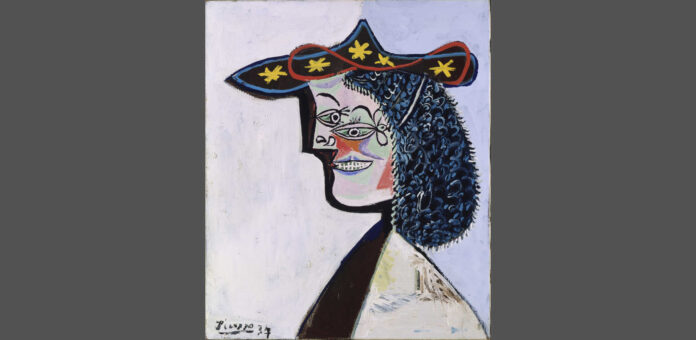The Bode-Museum is home to the most significant collection of pre-19th-century Spanish sculpture in Germany. The new exhibition series Spanish Dialogues presents these spectacular holdings to museum-goers in shows that transcend all conventional art-historical boundaries of genre and epoch, placing them in dialogue with specially invited artists and institutions. The series kicks off with a selection of eight masterpieces by Pablo Picasso from the Museum Berggruen.
To mark the 50th anniversary of Pablo Picasso’s (1881–1973) death, the show Spanish Dialogues: Picasso Works from the Museum Berggruen Visit the Bode-Museum sheds light on the central role that Spanish art history – both in its continuities and its caesuras – played for probably the most important Spanish artist of the 20th century.
Picasso viewed art as having neither past nor future. According to Picasso, it does not evolve, it is neither old nor modern, but should only be judged according to its relevance at a given point in time. Picasso studied, interpreted and adapted the work of his precursors, showing how important it was for him to look to the past in order to understand and depict the present. This is one of the reasons why Picasso remains an outstanding, if sometimes controversial, figure in the 21st century.
From an early point in his career, Picasso acquired countless artistic reproductions and original works by Old Masters and contemporaries, which served him as constant sources of reflection for his own works. Spanish art occupied a particularly central place in his universal imaginary, having gotten to know its breadth and diversity during his childhood and years of study in regions as culturally distinct and geographically dispersed as Andalusia (Málaga), Galicia (A Coruña), Catalonia (Barcelona) and Madrid.
Exhibition in Four Sections
Divided up into four sections, the exhibition invites visitors to engage in a multidisciplinary exploration of Spanish art. The first section forges a bridge between Spain and Germany in the 21st century and contextualises historical prejudices that continue to exist today between these two countries. The second section analyses the use of portraits as an instrument of power since the 14th century.
Today, control over what we show and how we show it, as well as visual strategies that define us as part of a social group dominate the world of social networks. However, the origins of these dynamics are almost as old as the history of art itself. The depiction of power and one’s own personality are reflected in the exhibition by way of Picasso’s Woman Seated in an Armchair (1939) and A Castilian Lady from the 16th century.
The third section focuses on the emotions and their depiction in art. This theme is by no means a new phenomenon, being a key aspect of Spanish art as far back as the 16th and 17th centuries. Emotions were an area of great fascination for Picasso, which is illustrated by the tense juxtaposition of his PortraitofNusch Éluard (1937) and Pedro Roldán’s (1624–1699) Mater Dolorosa (1670/75).
The illusion of realistically depicting the transcendental is addressed in the fourth section. In the age of digital communication, it seems increasingly difficult to discern between reality and fiction. A large portion of the art produced in Spain before 1800 sought to communicate directly with its audience, attempting to transcend the boundaries of the visible world. Diego de Siloé (1490/95–1563), for example, tried to achieve this. Like the majority of Spanish sculptors at the time, he worked both alone and together with painters to create artistic illusions that transcend the material world. With the advent of Cubism some four centuries later, Pablo Picasso definitively turned his back on the division between painting and sculpture, and between surface and space.
Curatorial Team
The Spanish Dialogues series is curated by María López-Fanjul y Díez del Corral, curator for Spanish art, Italian art (from 1500) and outreach for the Skulpturensammlung und Museum für Byzantinische Kunst in the Bode-Museum. Spanish Dialogues: Picasso Works from the Museum Berggruen Visit the Bode-Museum is curated by María López-Fanjul y Díez del Corral, Gabriel Montua, director of Museum Berggruen, and Veronika Rudorfer, a curator at Museum Berggruen.
Accompanying Programme
This exhibition will be accompanied by a public study day at the Bode-Museum on Thursday 19 October 2023, which has been made possible by the generous support of the Spanish embassy and the Instituto Cervantes Berlin.
The exhibition forms part of the official programme of events “Picasso Celebration 1973–2023”, funded by the French ministry of culture and the Spanish ministry of culture and sport. The exhibition is supported by Museum&Location.
A special exhibition of the Nationalgalerie and the Skulpturensammlung und Museum für Byzantinische Kunst – Staatliche Museen zu Berlin
Source : Museen zu Berlin






